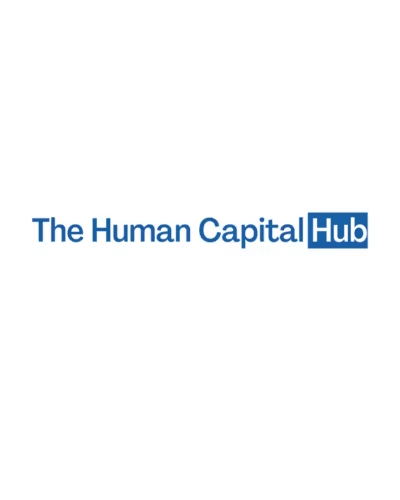In 2025, the workplace is being revolutionized by how employees personalize technology to fit their individual workflows. Navigating new software, settings, and gadgets has become second nature as you craft a seamless blend of tools that enhance productivity and satisfaction. Harnessing tech in ways that align with your unique needs means more efficiency, flexibility, and engagement at work.
It's fascinating to see how tech trends now reflect personal choices, making workspaces as diverse as the people who use them. From custom dashboards to tailor-made notifications, there's a growing movement toward personalization that caters to your specific tasks and preferences. This shift doesn't just streamline tasks; it empowers you to take control of your work environment.
The rise of personalized technology in the workplace offers a chance to enhance creativity while maximizing output. You'll discover tools that adapt to the way you like to work, fostering innovation and reducing frustration. As you explore how to make technology truly yours, expect a more dynamic, productive experience tailored to your exact needs.
Personalizing Technology: The Rise of Employee-Centric Workflows
In 2025, technology personalization is significantly changing how employees interact with their work tools. This shift empowers employees, enabling them to tailor their tech environments to enhance efficiency and satisfaction.
Why Personalization Matters in the Modern Workplace
Personalization in technology has become a necessity, not a luxury. You're likely seeking tools that adapt to your unique needs rather than constraining your workflow. This is because a tailored approach can significantly boost productivity and enhance your overall job satisfaction.
Organizations recognizing this trend offer flexible software solutions, allowing you to customize dashboards, automate tasks, and integrate preferred tools. These options support diverse working styles and foster a culture where you feel more connected and competent. In the modern workplace, understanding your individual preferences is key to thriving professionally.
How Employees Are Adapting Tech to Their Needs
Today, you're in charge of your tech environment like never before. Whether it's configuring notification settings, customizing app interfaces, or using advanced keyboard shortcuts, the choice is yours. These adjustments allow you to work more effectively while reducing the chances of burnout.
You're also likely using platforms that support third-party integrations to streamline your work processes. Zapier or IFTTT let you create custom workflows, saving time and energy. By crafting a toolkit tailored to your needs, you become more adaptable and ready to tackle daily challenges.
Shifting From Top-Down to Individualized Tech Solutions
In previous years, technology decisions often came from the top down, leaving you with limited choices and rigid systems. Now, there's a clear move toward individualized tech solutions. This shift reflects a growing awareness of the importance of employee empowerment and autonomy.
Companies are now actively seeking your input when selecting new tools or platforms. This participation ensures that your requirements are met, leading to more effective implementation and usage. As a result, you gain a sense of ownership over the tools you use, directly impacting your work experience and success.
Key Workplace Trends Shaping 2025
In 2025, workplaces are undergoing significant transformations. Employees are opting for flexible workspaces, leveraging personal tech for seamless transitions, and using AI to enhance productivity.
Flexible Workspaces Fueled by Smart Tools
You're likely familiar with the shift toward more adaptable and versatile work environments. Flexible workspaces are becoming more prominent, driven by smart tools that allow you to tailor your working area. These tools include adjustable desks, adaptive lighting, and soundproofing technologies that respond to your specific needs.
Seamless Integration of Personal and Professional Tech
You might be blending personal devices with work tech more than ever. This trend is breaking down the traditional barriers between work and life. Your smartphones, tablets, and smartwatches can connect effortlessly with workplace systems. This brings an unprecedented level of convenience and efficiency.
AI-Powered Workflow Customization
AI is taking personalization to the next level, allowing you to tailor workflows more specifically to your preferences and needs. With AI-driven applications, you can automate routine tasks, focus on high-value activities, and even anticipate potential issues. This transformation not only saves you time but also boosts productivity significantly.
Real-World Examples of Tech Personalization
Employees across various sectors are tailoring technology to enhance productivity. From innovative ideas to the strategic use of collaboration tools, personalization in tech is reshaping workflows and productivity.
Success Stories of Employee-Led Innovation
In many organizations, employees are customizing their devices to meet specific needs. For example, some professionals in creative fields are opting for iPhone 16 series cases with camera control, allowing them to easily adjust camera settings for photoshoots or video projects without needing additional tools.
Custom scripts and plugins are being used to enhance workflow in unique ways. By empowering staff to tweak these tools, companies are fostering creativity and efficiency. Encouragement from management is key, allowing employees freedom to experiment and create solutions that align perfectly with their roles.
Role of Collaboration Platforms in Empowering Staff
Collaboration platforms like Slack and Microsoft Teams have become vital for empowering employees. Personalization within these platforms is often dictated by the integrations and bots that teams themselves develop.
Imagine a marketing team developing a bot for tracking social media campaigns directly through their chat platform. This sort of customization encourages seamless interaction, enabling teams to become more agile. By utilizing these platforms to tailor workflows, staff can directly address unique challenges in their communication needs.
Adapting Hardware and Software for Unique Workflows
Personalization extends to the adaptation of hardware as well. Employees choose certain accessories, such as an iPhone 16 pro case, to enhance workflow efficiency and ensure their devices are protected while reflecting their personal style.
Customization extends to software as well. Employees adapt productivity software to better fit their tasks, such as using specific plugins in project management tools that align with their precise workflow requirements. This adaptability empowers staff to achieve more with less friction, ensuring that both hardware and software serve work purposes efficiently.
Integrating flexible hardware with customized software setups allows employees to maintain high levels of productivity and satisfaction in their work environments.
Looking Ahead: Opportunities and Challenges
As workplace technology becomes increasingly personalized, you'll find both opportunities for productivity and challenges in maintaining privacy and security. Adopting this shift successfully requires attention to specific areas impacting employees and organizations alike.
Balancing Personalization With Data Privacy
In an era of personalized tech, maintaining data privacy is critical. You’ll want tools that allow you to customize your workflow without compromising sensitive information. Consider using encryption and multi-factor authentication to protect data.
Organizations should invest in privacy-oriented training programs, empowering you to recognize potential security risks. Compliance with regulations such as GDPR is not just nice to have; it's a must. Being vigilant will help you align your work needs with privacy requirements, ensuring that your personal touch doesn’t become a security flaw.
Fostering a Culture of Empowerment
Creating a workplace that encourages tech personalization requires more than access to gadgets. It’s about trust and empowerment. When you have the freedom to tailor tools, you often feel more engaged and productive. Companies can support this by promoting open communication and feedback loops.
Initiatives like mentorship programs and personal skill development workshops can motivate you to explore new technologies without fearing mistakes. A culture where you feel supported to innovate fosters growth and satisfaction, making personalization a benefit rather than a burden.
Preparing Organizations for Continuous Change
As personalization advances, organizations need to adapt to ongoing changes. Adaptability is key. You may need regular training to stay current with new tools and workflows. Companies should prioritize flexibility by adopting scalable solutions.
Embrace initiatives like change management strategies to prepare for shifts without disruption. Encouraging cross-departmental collaboration allows you to share insights and enhance processes. By preparing for continuous change, you ensure that personalization remains an advantage, aligning with broader business goals.
Conclusion
Personalizing workplace technology empowers employees to tailor their environments for better productivity and satisfaction. From AI-driven tools to customizable platforms, these innovations boost efficiency and creativity. However, balancing personalization with privacy and fostering a supportive culture are key challenges.
As businesses adapt to these changes, staying flexible and continuously refining workflows will ensure long-term success. Embracing these shifts creates a dynamic and engaging work environment for all.



